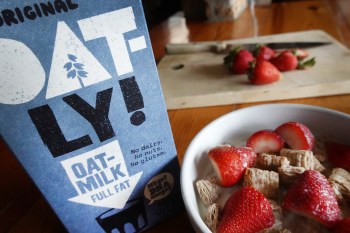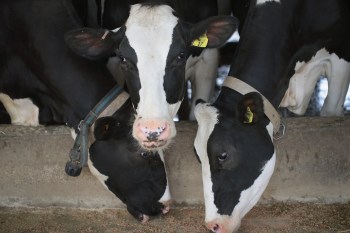Why are sticks of butter long and skinny in the East, but short and fat in the West?
Why are sticks of butter long and skinny in the East, but short and fat in the West?
Bonnie Robinson Beck from Larchmont, New York, has always wondered why butter cubes are long and skinny in the East, and short and squat in the West. Where do the two sizes meet, and why did this come about?
I had no idea this was true until I moved to Los Angeles. I grew up with long, skinny sticks of butter in the East, and out here they are short and fat.
Why?
As we’ve learned, there is an expert out there for absolutely everything. The University of California Davis used to have a Dairy Research and Information Center. I say “used to have” because it was basically one guy who’s now retired. His name is John Bruhn, and I called him up.
He said that the West Coast was once far behind in dairy production. In his words, “In the 1960s, the West Coast was [deficient] in terms of milk production to make dairy bi-products like cheeses and butter. All our milk went to fluid needs. Whole milks, low fat milks and non-fat milks, for example.”
Basically, there was enough milk to drink, and that was about it. But that changed quickly – in fact, California was on its way to becoming the number one dairy-producing state.
However, because the butter industry started so much earlier in the East than it did in the West “…the size of the cube you see is a result of newer equipment purchased at the time to package the butter,” Bruhn says.
Now that kind of answers the question, but when you stumble upon the nation’s foremost dairy research institution, you’ve got to go further. So I did some digging deep in the annals of UC Davis’s archives, and I found this old research paper written in 1948 by a researcher named Milton E. Parker. Turns out, the reason so many items in the grocery store come in a sealed bag inside of a cardboard carton is because of a guy named Frank Peters. He created that design for a line of crackers called “Uneedas” back in 1889.

It was revolutionary. It kept the crackers fresh and stopped them from breaking.
Like everyone else, the butter industry thought the “Peter’s Package” idea was great. For a long time, butter had been shipped in wooden tubs and scooped out into cheese cloth dipped in ice water, then handed to customers in a ball – not the most appetizing sell. This new packaging made it cleaner and more appealing. Plus, customers could tell they were getting the right amount.
Butter was traditionally sold a pound at a time, so the box was sized to fit a pound. A restauranteur in New Orleans wrote a letter to his butter supplier, Swift and Company in Hutchinson, Kansas, and asked if he could get ¼ pound sticks. He was a big buyer so Swift complied, the idea caught on, and that’s when the stick as we know it was born.

A lot of people continue to be passionate about butter. In fact, since 2007, Land O’ Lakes has made both long and short sticks to cater to different parts of the country.
And finally, for the record: The long and skinny sticks of butter are called “Elgins,” because that’s the company that made the machines. The other ones are called “Western Stubbies.”
There’s a lot happening in the world. Through it all, Marketplace is here for you.
You rely on Marketplace to break down the world’s events and tell you how it affects you in a fact-based, approachable way. We rely on your financial support to keep making that possible.
Your donation today powers the independent journalism that you rely on. For just $5/month, you can help sustain Marketplace so we can keep reporting on the things that matter to you.


















